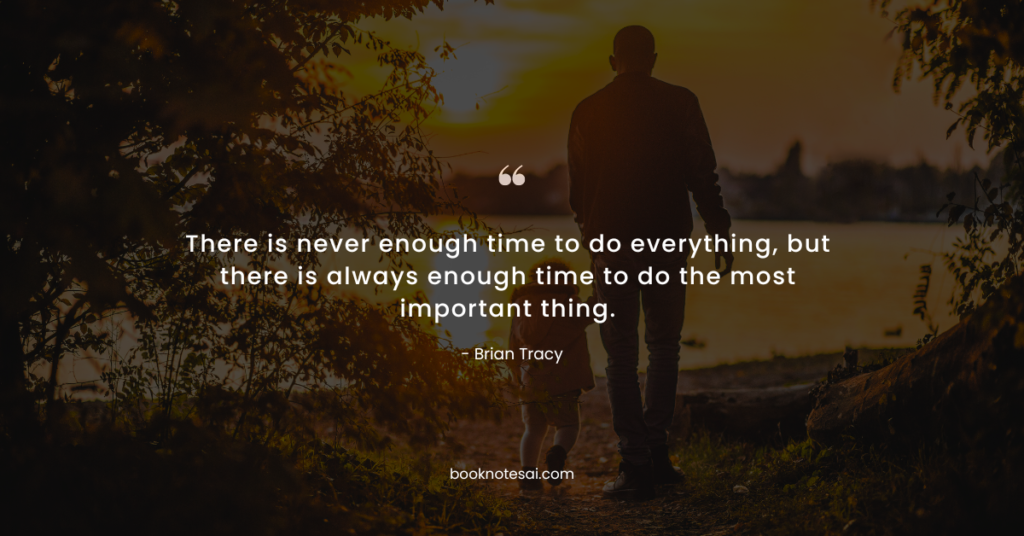Listen To This Post
21 Great Ways to Stop Procrastinating and Get More Done in Less Time.

This is a book summary for Eat That Frog! by Brian Tracy. The essential information is structured to be practical, clear, and really helpful, while also saving you a bunch of time.
Introduction: Why this book?
- In Eat That Frog!, Brian Tracy provides a compelling framework for overcoming procrastination and maximizing productivity in today’s fast-paced world.
- Through practical strategies and actionable advice, Tracy equips you with the tools needed to tackle procrastination head-on, making this book a must-read for anyone seeking to achieve their goals efficiently.
Eat That Frog Summary:
- Brian Tracy emphasizes the importance of prioritization, urging readers to tackle their most challenging tasks first—the “frogs” they tend to procrastinate on.
- Tracy outlines 21 practical techniques, each designed to help readers overcome procrastination and increase productivity in various aspects of their lives.
- Through anecdotes and real-life examples, Tracy illustrates how effective time management and disciplined habits can lead to remarkable personal and professional growth.
- The book emphasizes the significance of focus and clarity in goal-setting, encouraging readers to identify their most critical objectives and take decisive action towards achieving them.
- Tracy’s straightforward approach and actionable advice make Eat That Frog! an indispensable resource for individuals striving to maximize their potential and accomplish more in less time.
💡 5 Big Ideas
- Prioritize Your Tasks: Brian Tracy emphasizes the importance of identifying and tackling your most important tasks first, enabling you to focus your energy on high-value activities.
- Practice the 80/20 Rule: Tracy highlights the Pareto Principle, encouraging readers to focus on the vital few tasks that yield the most significant results.
- Set Clear Goals: Setting clear, achievable goals provides direction and motivation, helping you overcome procrastination and maintain momentum.
- Develop Effective Habits: By cultivating disciplined habits and routines, you can eliminate distractions and optimize your productivity.
- Take Decisive Action: Procrastination thrives on indecision. By taking decisive action and embracing discomfort, you can conquer procrastination and achieve your goals with confidence.
In this book, Brian Tracy distills timeless principles of productivity into actionable insights, empowering readers to overcome procrastination and unlock their full potential.
Powerful Quotes
- “The ability to concentrate single-mindedly on your most important task, to do it well, and to finish it completely, is the key to great success, achievement, respect, status, and happiness in life.”
This quote emphasizes the importance of focus and completion in achieving success. - “There is never enough time to do everything, but there is always enough time to do the most important thing.”
This quote underscores the significance of prioritization in effective time management. - “You can’t eat every tadpole and frog in the pond, but you can eat the biggest and ugliest one, and that will be enough, at least for the time being.”
Tracy uses this metaphor to encourage readers to tackle their most challenging tasks first. - “Successful people are those who are willing to delay gratification and make sacrifices in the short term so that they can enjoy far greater rewards in the long term.”
This quote highlights the importance of discipline and delayed gratification in achieving success. - “Your frog is your biggest, most important task, the one you are most likely to procrastinate on if you don’t do something about it now.”
Tracy emphasizes the significance of addressing critical tasks promptly to avoid procrastination. - “You cannot manage time; you can only manage yourself.”
This quote underscores the importance of self-discipline and personal accountability in effective time management. - “The more you discipline yourself to work nonstop on a single task, the more you move onward and upward in your career.”
Tracy emphasizes the power of sustained focus and dedication in achieving professional success. - “One of the very worst uses of time is to do something very well that need not be done at all.”
This quote highlights the importance of discernment in prioritizing tasks and allocating resources efficiently. - “The key to reaching high levels of performance and productivity is to develop the lifelong habit of tackling your major task first thing each morning.”
Tracy emphasizes the importance of starting each day with purpose and focus to maximize productivity. - “Your ability to select your most important task at each moment, and then to get started on that task and to get it done both quickly and well, will probably have more of an impact on your success than any other quality or skill you can develop.”
This quote underscores the critical role of effective task management in achieving success.
One Reason To Read This Book:
You should read Eat That Frog! if you’re ready to conquer procrastination, boost your productivity, and achieve your goals with clarity and purpose.
Who should I recommend Eat That Frog! summary to?
You can recommend the summary of Eat That Frog! to students, professionals, entrepreneurs, and anyone looking to enhance their time management skills and overcome procrastination effectively.
Whether you’re a busy professional or an aspiring achiever, this book offers practical strategies for maximizing productivity and achieving success.
Recommendations:
- Deep Work: Rules for Focused Success in a Distracted World by Cal Newport
- The Power of Habit: Why We Do What We Do in Life and Business by Charles Duhigg
- Atomic Habits: An Easy & Proven Way to Build Good Habits & Break Bad Ones by James Clear
This summary serves as a complimentary guide to the reviewed title Eat That Frog!, offering key insights. For a deeper understanding, we encourage you to explore the full book.


